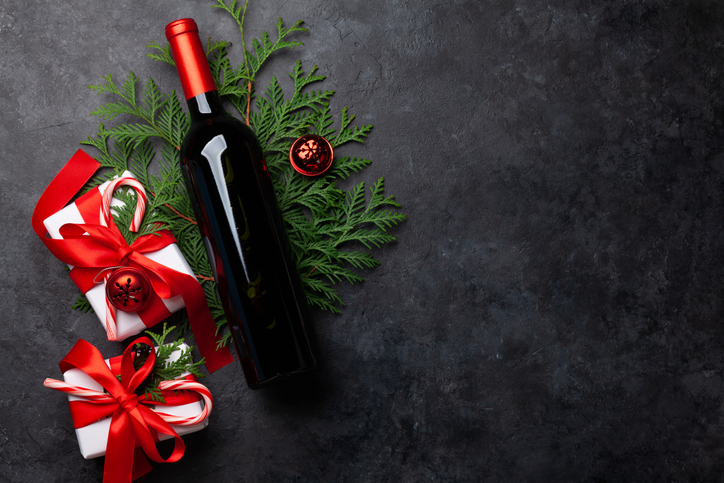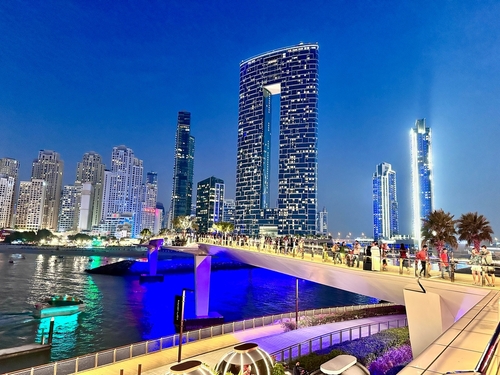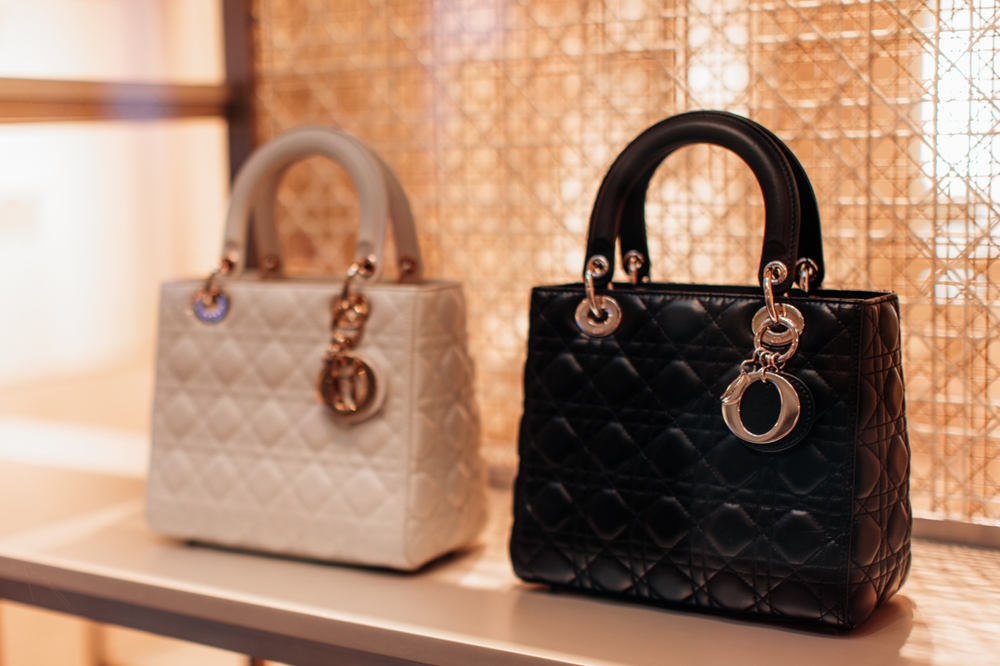How to Choose the Right Wine Gift
Whether you’re bringing a wine to drink with dinner or wrapping a bottle to bequeath, our wine columnist and the wine pros she polled have some very helpful tips to consider.
IT’S THE SEASON of giving, and wine lovers know what that means: You’re likely to give, and to get, a bottle of wine.
Will your bottle be gratefully received or quickly regifted? I always hope for the former, and I’ve been mostly—though not entirely—successful with the wines that I’ve brought to houses of both strangers and friends. I’ve given wines that I considered interesting or fun, or that pair well with food; sometimes they’re just wines that I like to drink (Champagne). How do other wine lovers choose the bottles that they bring along? When I asked oenophiles, both pro and amateur, I heard some good stories and a few useful tips.
For my part, I’ve found that the easiest wine to bring to somebody’s house is one meant to match with a particular meal. I often bring bottles to dinners with friends whose menus I’ve inquired about in advance, and the wines, carefully chosen to pair with the meal, are invariably well-received. Sometimes I’ll bring a wine to match with the meal and a second for the host to keep.
When it comes to bringing wines to the houses of people I don’t know, let’s just say that my track record isn’t exactly 100%. One of my biggest failures in that regard came a few years ago, when my husband and I were invited to an avid wine collector’s house along with the friends that we had in common. The host, I was told, loved expensive Bordeaux.
Since I don’t have lots of expensive Bordeaux in my cellar, I decided to bring something fun that the collector probably hadn’t encountered. I chose the Ceretto Moscato d’Asti, a slightly fizzy, fresh, peach-inflected wine from a top producer in Piedmont, Italy. The Ceretto Moscato costs around $20, and it’s not only delicious, but comes in a cool triangle-shaped bottle.
The wine was no mere novelty, however. Although some wine drinkers think of Moscato as cheap commercial wine that comes in a jug, Moscato from Piedmont is quality stuff. Still, it seemed the collector presumed that my gift belonged in the former category. He took one look at my bottle and left it by his front door. All the easier to re-gift to his letter-carrier, I thought.
Sometimes I’ve brought wines that are a little too quirky for popular taste. Take, for example, the 2012 Calabretta Nerello Mascalese Vigne Vecchie ($35) that I recently brought to the house of a friend. A rich, earthy, complex red from the Etna region of Sicily, it reminds me of an old-school Barolo. But the wine can be a little bit funky when it’s first opened, and it definitely benefits from a good decanting. And sometimes that takes too long when you’ve brought it to drink with a dinner.
Such uncertainties are why I usually opt for a bottle of Champagne or a Cremant d’Alsace. Everyone knows what to do with sparkling wine, and if they don’t like it or don’t want to drink it, it’s the easiest sort of wine to regift. I usually give Champagnes from small growers like Pierre Péters or Pierre Moncuit to friends. To someone I don’t know well or whom I suspect would like a “brand” name, I’ll bring a Champagne from Louis Roederer instead.
Katja Scharnagl, beverage director of Koloman NYC restaurant in Manhattan, told me that she likes to bring Champagne, too, and her budget is a rather generous $40-$50 a bottle. Ms. Scharnagl also takes care to bestow the bottle ready to drink. “I always bring it chilled,” she said.
My friend RJ, a big wine collector, used to bring very good Champagne and wines to his friends’ houses. As he explained, “I bring wines I like to drink.” But sometimes the bottles are so good they’re completely drained before RJ gets a glass. “I brought a bottle of Tignanello to someone’s house, and it was gone in two seconds,” he said, naming a famous Super Tuscan that costs around $150 a bottle. RJ decided to stop gifting wine and gives expensive Japanese knives instead. (“They’re really great knives,” he said.) That way, I guess, he’s spared the pain of missing out on something he truly loves.
I wondered what wines a winemaker might bring to a party or a dinner. So I put the question to Richard Olsen-Harbich, head winemaker at Bedell Cellars in Cutchogue, N.Y., on the North Fork of Long Island. Does Mr. Olsen-Harbich typically give wines he made, or wines made by somebody else? And what wines do others tend to bring to his house?
Sometimes Mr. Olsen-Harbich brings his own wine—but not necessarily in a bottle. “I’ll bring a sample right out of barrel, which is always fun,” he wrote in an email. If he’s dining with fellow North Forkers, he’ll bring a wine from elsewhere. “I like turning people on to wines from the Finger Lakes or Virginia, which are harder to find and beautiful examples of winemaking,” he said.
Is it daunting for others to bring him a bottle? “They often stress out about it because they think I’m a tough audience, which I’m not,” Mr. Olsen-Harbich replied. But he loves getting wines he doesn’t know much about or has never encountered, and is especially keen on wines from Germany and Alsace, France.
When Alison Smith Story, co-winemaker at Smith Story Wine Cellars in Healdsburg, Calif., visits friends, she might bring a bottle of her own Smith Story Wine Cellars Brut Méthode Traditionnelle Mendocino County Sparkling Wine but also a vintage cookbook or an old book of poetry. “The vintage cookbook almost always becomes a topic of conversation at the table and is passed around,” she said. What wines do others bring to her house? She said her friends tend not to bring wine at all but, rather, “single-origin coffee beans or packets of flowers for my garden.”
I imagined it would be just as hard to bring a bottle to a wine retailer as to a winemaker, and perhaps even harder. After all, a retailer can get any wine he or she wants. And what might a retailer give to someone, given all the options? I asked Gina Trippi, co-owner of Metro Wines in Asheville, N.C.
Unsurprisingly, Ms. Trippi said she tailors the wine to the taste of the recipient. For a female and/or Francophile friend fond of crisp white wines, it might be a Picpoul made by a woman winemaker. Ms. Trippi had actually just published a set of gifting guidelines in the Metro Wines newsletter “The Public Palate.” One key criterion: “A gift should not have a screw cap.” Another piece of advice: “A bottle [should be] shelf priced at $20. A bottle under $20 may make you look a little too holiday frugal and one [costing] way over can be seen as showing off.”
For Ms. Trippi, a great gift bottle is one purchased from a small retailer like her, not a big-box store. “It’s a bottle that says ‘You know me. Or, at least you tried!’ ” she said. (And by the way, she really likes a good bottle of Cinsault.)
I can’t say I agree with or abide by all of her gift criteria. For instance, it’s near-impossible to find a wine from Austria, Australia or New Zealand that isn’t screw capped, yet some of those wines make wonderful gifts. I’ve also given (and received) wines that cost more than $20. But I definitely agree about choosing a wine that shows care and intention.
 Copyright 2020, Dow Jones & Company, Inc. All Rights Reserved Worldwide. LEARN MORE
Copyright 2020, Dow Jones & Company, Inc. All Rights Reserved Worldwide. LEARN MORE
This stylish family home combines a classic palette and finishes with a flexible floorplan
Just 55 minutes from Sydney, make this your creative getaway located in the majestic Hawkesbury region.
As Paris makes its final preparations for the Olympic games, its residents are busy with their own—packing their suitcases, confirming their reservations, and getting out of town.
Worried about the hordes of crowds and overall chaos the Olympics could bring, Parisians are fleeing the city in droves and inundating resort cities around the country. Hotels and holiday rentals in some of France’s most popular vacation destinations—from the French Riviera in the south to the beaches of Normandy in the north—say they are expecting massive crowds this year in advance of the Olympics. The games will run from July 26-Aug. 1.
“It’s already a major holiday season for us, and beyond that, we have the Olympics,” says Stéphane Personeni, general manager of the Lily of the Valley hotel in Saint Tropez. “People began booking early this year.”
Personeni’s hotel typically has no issues filling its rooms each summer—by May of each year, the luxury hotel typically finds itself completely booked out for the months of July and August. But this year, the 53-room hotel began filling up for summer reservations in February.
“We told our regular guests that everything—hotels, apartments, villas—are going to be hard to find this summer,” Personeni says. His neighbours around Saint Tropez say they’re similarly booked up.
As of March, the online marketplace Gens de Confiance (“Trusted People”), saw a 50% increase in reservations from Parisians seeking vacation rentals outside the capital during the Olympics.
Already, August is a popular vacation time for the French. With a minimum of five weeks of vacation mandated by law, many decide to take the entire month off, renting out villas in beachside destinations for longer periods.
But beyond the typical August travel, the Olympics are having a real impact, says Bertille Marchal, a spokesperson for Gens de Confiance.
“We’ve seen nearly three times more reservations for the dates of the Olympics than the following two weeks,” Marchal says. “The increase is definitely linked to the Olympic Games.”

Getty Images
According to the site, the most sought-out vacation destinations are Morbihan and Loire-Atlantique, a seaside region in the northwest; le Var, a coastal area within the southeast of France along the Côte d’Azur; and the island of Corsica in the Mediterranean.
Meanwhile, the Olympics haven’t necessarily been a boon to foreign tourism in the country. Many tourists who might have otherwise come to France are avoiding it this year in favour of other European capitals. In Paris, demand for stays at high-end hotels has collapsed, with bookings down 50% in July compared to last year, according to UMIH Prestige, which represents hotels charging at least €800 ($865) a night for rooms.
Earlier this year, high-end restaurants and concierges said the Olympics might even be an opportunity to score a hard-get-seat at the city’s fine dining.
In the Occitanie region in southwest France, the overall number of reservations this summer hasn’t changed much from last year, says Vincent Gare, president of the regional tourism committee there.
“But looking further at the numbers, we do see an increase in the clientele coming from the Paris region,” Gare told Le Figaro, noting that the increase in reservations has fallen directly on the dates of the Olympic games.
Michel Barré, a retiree living in Paris’s Le Marais neighbourhood, is one of those opting for the beach rather than the opening ceremony. In January, he booked a stay in Normandy for two weeks.
“Even though it’s a major European capital, Paris is still a small city—it’s a massive effort to host all of these events,” Barré says. “The Olympics are going to be a mess.”
More than anything, he just wants some calm after an event-filled summer in Paris, which just before the Olympics experienced the drama of a snap election called by Macron.
“It’s been a hectic summer here,” he says.

AFP via Getty Images
Parisians—Barré included—feel that the city, by over-catering to its tourists, is driving out many residents.
Parts of the Seine—usually one of the most popular summertime hangout spots —have been closed off for weeks as the city installs bleachers and Olympics signage. In certain neighbourhoods, residents will need to scan a QR code with police to access their own apartments. And from the Olympics to Sept. 8, Paris is nearly doubling the price of transit tickets from €2.15 to €4 per ride.
The city’s clear willingness to capitalise on its tourists has motivated some residents to do the same. In March, the number of active Airbnb listings in Paris reached an all-time high as hosts rushed to list their apartments. Listings grew 40% from the same time last year, according to the company.
With their regular clients taking off, Parisian restaurants and merchants are complaining that business is down.
“Are there any Parisians left in Paris?” Alaine Fontaine, president of the restaurant industry association, told the radio station Franceinfo on Sunday. “For the last three weeks, there haven’t been any here.”
Still, for all the talk of those leaving, there are plenty who have decided to stick around.
Jay Swanson, an American expat and YouTuber, can’t imagine leaving during the Olympics—he secured his tickets to see ping pong and volleyball last year. He’s also less concerned about the crowds and road closures than others, having just put together a series of videos explaining how to navigate Paris during the games.
“It’s been 100 years since the Games came to Paris; when else will we get a chance to host the world like this?” Swanson says. “So many Parisians are leaving and tourism is down, so not only will it be quiet but the only people left will be here for a party.”
This stylish family home combines a classic palette and finishes with a flexible floorplan
Just 55 minutes from Sydney, make this your creative getaway located in the majestic Hawkesbury region.






















